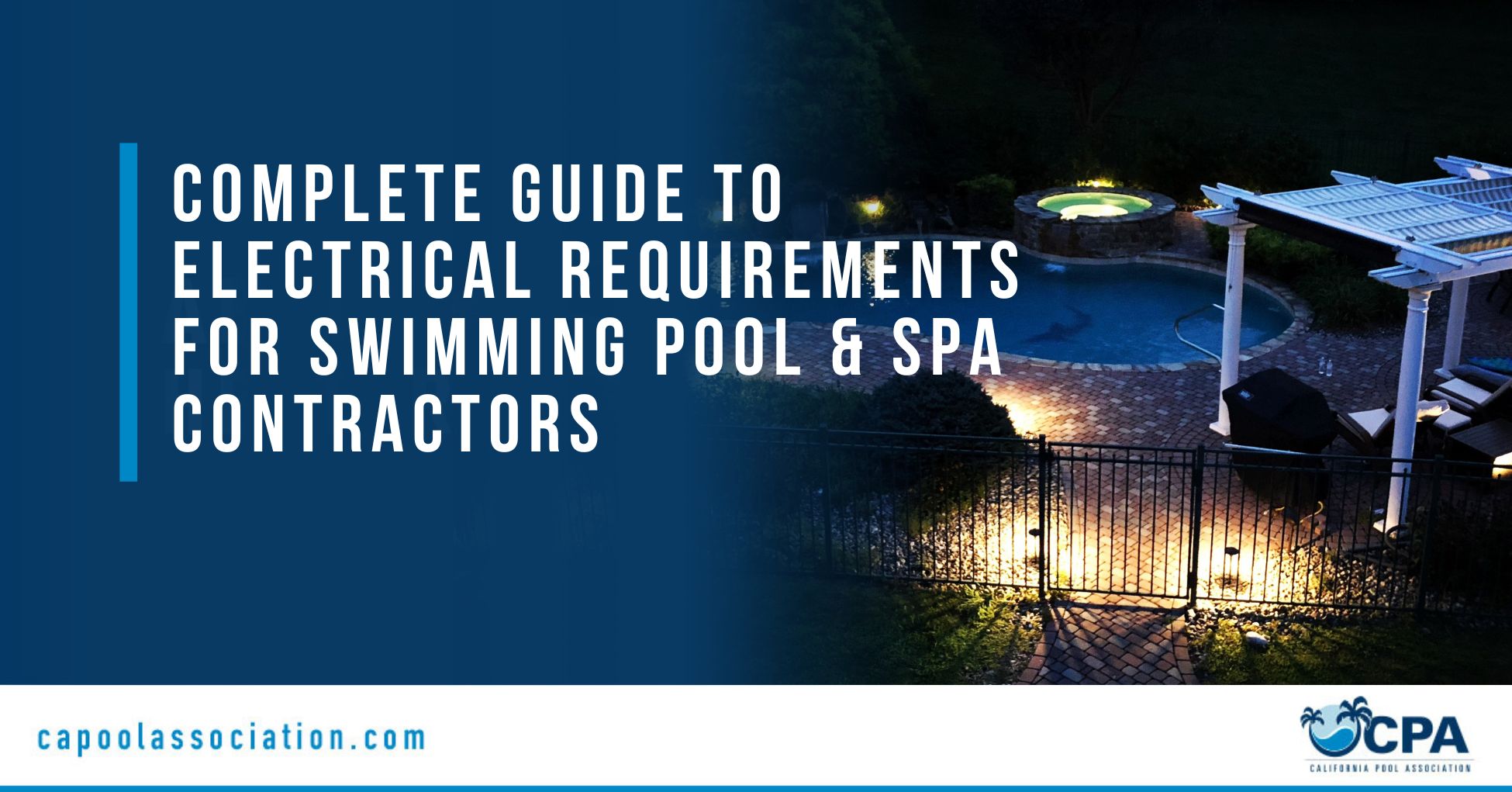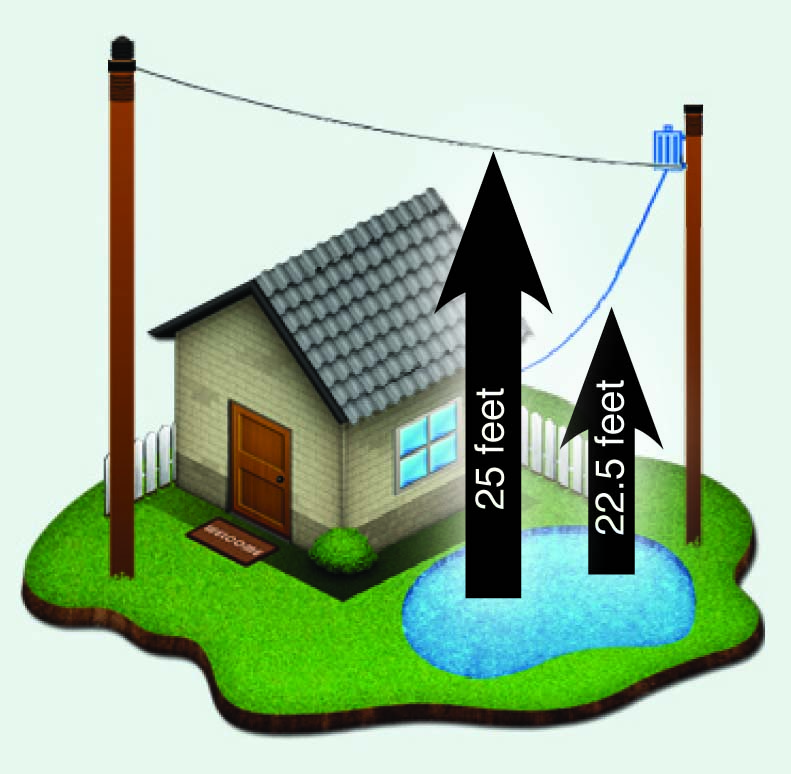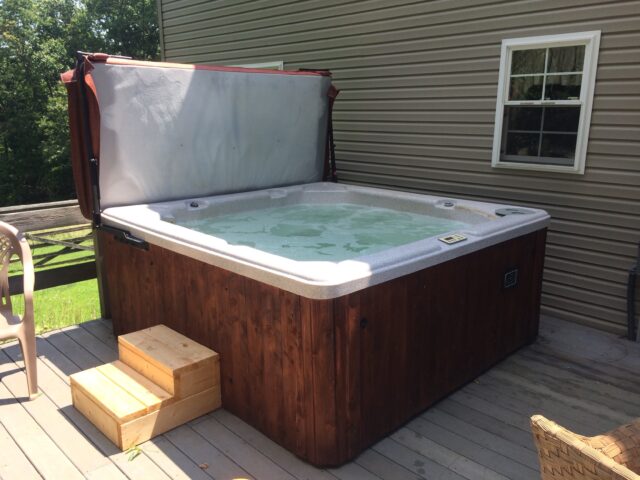
Pools and spas come in various shapes and sizes, and most require some sort of electrical equipment to run pumps, power lights, maintain water quality and much more. These electrical installations must be installed by a licensed electrician and it’s important to know what the code requirements are from the National Electric Code as of April 2024.

Underground wiring is not allowed under any pool or spa and must be installed no closer than five feet from any sidewall.
If there is insufficient space to maintain the five-foot rule, they will make an exception to the rule which includes:

It is preferable to have a pool or spa installed away from any overhead lines. But in the case that it cannot be avoided, installations must follow basic rules for overhead electrical lines:
Water level is defined as the highest point in which the water is able to reach before it spills out of the pool or spa.
Maintenance disconnects are required in shutting down the power to pool or spa pumps, filters, and other utilization equipment. The disconnect must be installed within sight but should not be closer than 5 feet from the pool or spa to avoid any accidental power shutdowns.
The rules are primarily designed to prevent any possible shocks:

Most equipment that requires electricity must be protected by GFCI devices. This includes the following:
Rather than integrated with a swimming pool, there are special rules for spas and hot tubs that are stand-alone units which include:
Contact us today and find out how you can benefit from being a member of the California Pool Association.
In the meantime, let us recap the biggest changes in the swimming pool requirements in California.

The information provided on this website does not, and is not intended to, constitute as professional advice; instead, all information, content, and materials available on this site are for general informational purposes only. All liability with respect to actions taken or not taken based on the contents of this site are hereby expressly disclaimed.
As of this writing, in 2024, two states have adopted the 2008 edition of the NEC into their state Codes of Regulations:
Kansas and Indiana.
One state has adopted the 2011 edition of the NEC:
Nevada. The District of Columbia has also adopted the 2011 NEC.
Eight states have adopted the 2014 edition of the NEC:
Alabama, Delaware, Louisiana, Maryland, Montana, Pennsylvania, Oklahoma, and Virginia.
26 states have adopted the 2017 edition of the NEC:
Alaska, Arkansas, California, Connecticut, Florida, Hawaii, Idaho, Iowa, Kentucky, Maine, Michigan, Nebraska, New Hampshire, New Jersey, New Mexico, New York, North Carolina, Ohio, Oregon, Rhode Island, South Carolina, Tennessee, Utah, Vermont, West Virginia, and Wisconsin.
These states have adopted the 2020 edition of the NEC:
Colorado, Georgia, Massachusetts, Minnesota, North Dakota, South Dakota, Texas, Washington, and Wyoming.
Finally, these are the states that do not have statewide adoption of any version of the NEC. Note that counties and municipalities in these states may require adherence to some version of the NEC; consult local building departments for more information.
Arizona, Illinois, Missouri, Mississippi